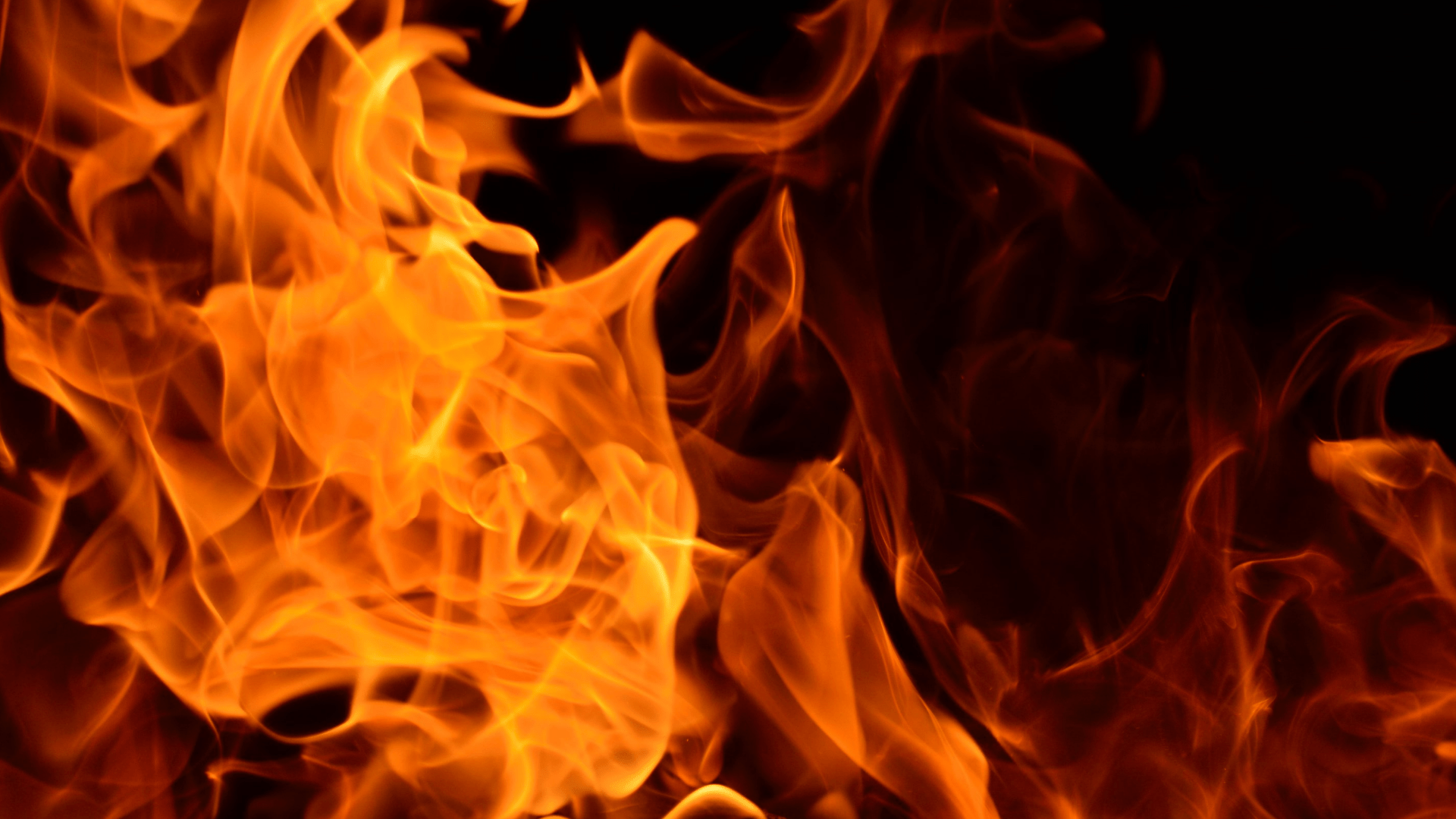The 5 main fire extinguisher types in the UK are Water, Foam, Dry Powder, CO2 and Wet Chemical.
We offer a range of commercial security systems, business CCTV, access control systems and commercial alarms for clients in Manchester, the North West and across the UK. We do not provide fire systems or services; this page is only a guide. We recommend that you contact a fire safety specialist if you have a fire system requirement.
For your premises to meet current fire safety regulations you need to have the right types of fire extinguishers, this will also ensure that your premises are protected in the event of a fire occurring.
There are several classes of fire and each fire extinguisher type is designed to tackle them. They are based on which fuels a fire, to begin with. It is the presence of the fuel within your premises that will help determine which fire extinguishers types you need and the location of them.
As well as the correct type of fire extinguisher, you will also need the right size and weight for each fire extinguisher.
What are the fire extinguisher classes?
There are six classes of fire extinguishers.
Class A fires – fires involving flammable solids such as wood, paper, and textiles
Class B fires – fires involving flammable liquids such as petrol, paint or spirits
Class C fires – fires involving flammable gases such as propane and butane
Class D fires – fires involving flammable metals and chemicals such as magnesium, lithium or potassium
Electrical fires – fires involving electrical equipment such as laptops and photocopiers. The fire changes class once the electrical item is removed.
Class F fires – fires involving cooking oils such as olive oil or butter. Typically a chip-pan fire
What are the fire extinguisher colour codes?
The five fire extinguisher colours are:
- Red – Water (Spray and Mist)
- Cream – Foam
- Blue – Dry Powder
- Black – Carbon Dioxide (CO2)
- Yellow – Wet Chemical
Image credit – Warwickshire County Council
Water Fire Extinguishers (Red)
Water fire extinguishers are suited to class A fire risks and are the most popular fire extinguisher type. They distribute water at high pressure to extinguish flames.
In the UK Water fire extinguishers are the most common extinguishers found.
What is the Water Fire Extinguisher Label Colour?
Water fire extinguisher labels are bright red.
Uses for Water Fire Extinguishers
Water fire extinguishers are used for fires caused by wood, coal, textiles, paper, cardboard and fabrics.
You should not Use Water Fire Extinguishers For:
- Kitchen fires
- Electronic equipment fires
- Flammable liquid or gas fires
How Water Fire Extinguishers Work
A water fire extinguisher works by having a cooling effect on the fire’s fuel and taking away the heating element that the fire needs to keep burning. This will result in the fire burning more slowly and results in the flames being put out and the fire will be extinguished.
Types of Businesses that need water fire extinguishers
As this is the most common fire extinguisher a water fire extinguisher is used throughout most buildings in the UK. A list of the most common is below:
- Office Buildings
- Apartments
- Schools
- Hospitals
- Shops
Where should Water Fire Extinguishers be stored?
During your fire risk assessment locations will be identified as class A fire risks, and this is where the Water fire extinguishers will be placed. This should be next to the exits on floors.
Foam Fire Extinguishers (Cream)
For class B fires a Foam fire extinguisher is the most common type of extinguisher used. As these fire extinguishers are water-based, they can also be used on Class A fires.
What is the Foam Fire Extinguisher Label Colour?
Foam fire extinguishers labels are cream.
Uses for Foam Fire Extinguishers
Like the water fire extinguisher type, foam fire extinguishers can be used for fires involving flammable solids such as wood, paper, and textiles. In addition to flammable solids, foam fire extinguishers can also be used on flammable liquids including petrol or paint.
You should not use foam fire extinguishers for:
- Kitchen fires
- Electronic equipment fires
- Flammable liquid or gas fires
How Foam Fire Extinguishers work
Foam fire extinguishers work by creating a cooling effect on the fuel which is feeding the fire, and the foaming agent inside the extinguisher (Aqueous Film Forming Foam) helps by creating a barrier between the flames of the fire and the fuel. This will then result in the fire being extinguished.
Types of Businesses that need foam fire extinguishers
Foam fire extinguishers should be used in buildings where flammable liquids are stored, and within buildings where organic materials are found. A list of the most common is below:
- Schools
- Office Buildings
- Apartments
- Hospitals
- Shops
Where to store Foam Fire Extinguishers
Once a class A or class B fire risk has been identified then Foam fire extinguishers should be stored at exit points at these locations.
Dry Powder Fire Extinguishers (Blue)
Dry powder extinguishers can be used in the event of class A, B or C fires and are commonly known as ABC extinguishers because of this. This type of extinguisher should not be used in an enclosed space as the powder could be easily inhaled and is also incredibly difficult to clean up once the fire has been extinguished.
Specialist dry powder extinguishers exist that can be used on fires caused by flammable liquids. Standard dry powder fire extinguishers can be used on fires involving electronic equipment up to 1000v.
What is the Dry Powder Fire Extinguisher Label Colour?
Dry powder fire extinguishers labels are blue.
Uses for Dry Powder Fire Extinguishers
Dry powder fire extinguishers can be used in a wide range of scenarios involving organic materials such as cardboard, paper, fabrics, wood and coal.
They can also be used on flammable gases such as liquid petroleum, flammable liquid such as petrol and electrical equipment.
The specialist dry powder extinguishers available can also be used on flammable metals such as titanium.
Where should you not use a dry powder fire extinguisher?
- Kitchen fires that involve cooking oil
- Fires within enclosed spaces
- Fires that involve electronic equipment over 1000v
How do dry powder extinguishers work?
Dry Powder fire extinguishers work by removing the heating element of the fire triangle, without this the fire will extinguish. They also separate the fuel of the fire from the oxygen element.
What types of businesses would use a dry powder fire extinguisher?
As dry powder fire extinguishers are advised not to be used in enclosed spaces, the below is a common list of businesses that would use a dry powder fire extinguisher:
- Garage forecourts
- Businesses with large boiler rooms
- LPG dispensing plants
- Welding or flame cutting businesses
Where should I store a dry powder fire extinguisher?
Dry Powder fire extinguishers should be stored directly next to the source of the fire risk to enable quick access if required.
Carbon Dioxide (CO2) Fire Extinguishers (Black)
Carbon dioxide fire extinguishers will often be found in server rooms or in a space where a large number of electrical devices are based. They are used in extinguishing electrical fires.
What is the CO2 Fire Extinguisher Label Colour?
CO2 fire extinguisher labels are black.
Uses for CO2 Fire Extinguishers
CO2 fire extinguishers can be used on flammable liquids such as petrol and to extinguish electrical fires.
What should you not use a CO2 fire extinguisher for?
- Kitchen fires
- Fires that involve materials like paper or textiles
- Fires that involve flammable metals
How do CO2 fire extinguishers work?
A CO2 fire extinguisher works by suffocating a fire with CO2 which causes the oxygen to be displaced and the fire to burn out.
What types of businesses use a CO2 fire extinguisher?
Co2 Fire extinguishers should be used in premises with electrical equipment such as:
- Offices
- Server rooms
- Technology storage rooms
Where should I store a CO2 fire extinguisher?
CO2 fire extinguishers should be stored next to the nearest fire exits and/or by the source of a fire risk, which should be identified by a fire risk assessment.
Wet Chemical Fire Extinguishers (Yellow)
Wet chemical fire extinguishers are used in class F fires that involve cooking oils and fats. Although his type of fire extinguisher could be used in Class A fires, a foam or water fire extinguisher would be better suited to this class of fire.
What is the Wet Chemical Fire Extinguisher Label Colour?
A wet chemical fire extinguisher label is Yellow.
What are Wet Chemical Fire Extinguishers used for?
A wet chemical fire extinguisher is ideal for fires that involve fat or cooking oil.
You should not use a wet chemical fire extinguisher for:
- Electrical fires
- Fires that involve flammable metals
- Fires that involve flammable liquids or gasses
How do Wet Chemical Extinguishers work?
Upon pressing the fire extinguisher trigger potassium is expelled as a fine mist, this creates a layer of soapy foam on the surface of the burning oil or fat that starves the fire of the oxygen.
What types of businesses use wet chemical fire extinguishers?
- Restaurants
- Commercial kitchens
- Canteens
Where to store Wet Chemical Extinguishers
Wet Chemical fire extinguishers should be stored next to the source of a fire risk after a fire assessment has taken place.
Fire Extinguisher Commissioning
Fire extinguishers are not compliant with UK fire extinguisher legislation until they have been commissioned. Even if you have the correct fire extinguisher type and sizes they are not compliant until you have them checked and approved as safe to use.
Fire extinguisher commissioning means checking:
- That the fire extinguisher has been properly installed.
- Each fire extinguisher is the correct weight, pressure, type and size.
- Hoses and horns are correctly attached
- That each fire extinguisher is completely undamaged and fit for use
After these checks have taken place by your selected fire extinguisher engineering company, you will receive a certificate verifying that your fire extinguishers have been commissioned in line with UK fire regulations, and are therefore safe to use.






